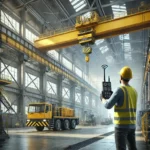جرثقیلهای اولیه: نقطه شروع یک تحول صنعتی
جرثقیلهای اولیه نقش مهمی در توسعه فناوری و صنایع از دوران باستان ایفا کردند. از دوران تمدنهای باستانی تا انقلاب صنعتی، جرثقیلها یکی از ابزارهای اساسی برای ساختوساز و جابهجایی بارهای سنگین بودند. این ابزارهای ابتدایی که با تکنولوژیهای ساده ساخته شده بودند، راه را برای توسعه جرثقیلهای مدرن هموار کردند. در این مقاله، به بررسی تاریخچه و کارکرد جرثقیلهای اولیه پرداخته و تأثیر آنها بر توسعه صنایع مختلف را بررسی میکنیم.
تاریخچه جرثقیلهای اولیه
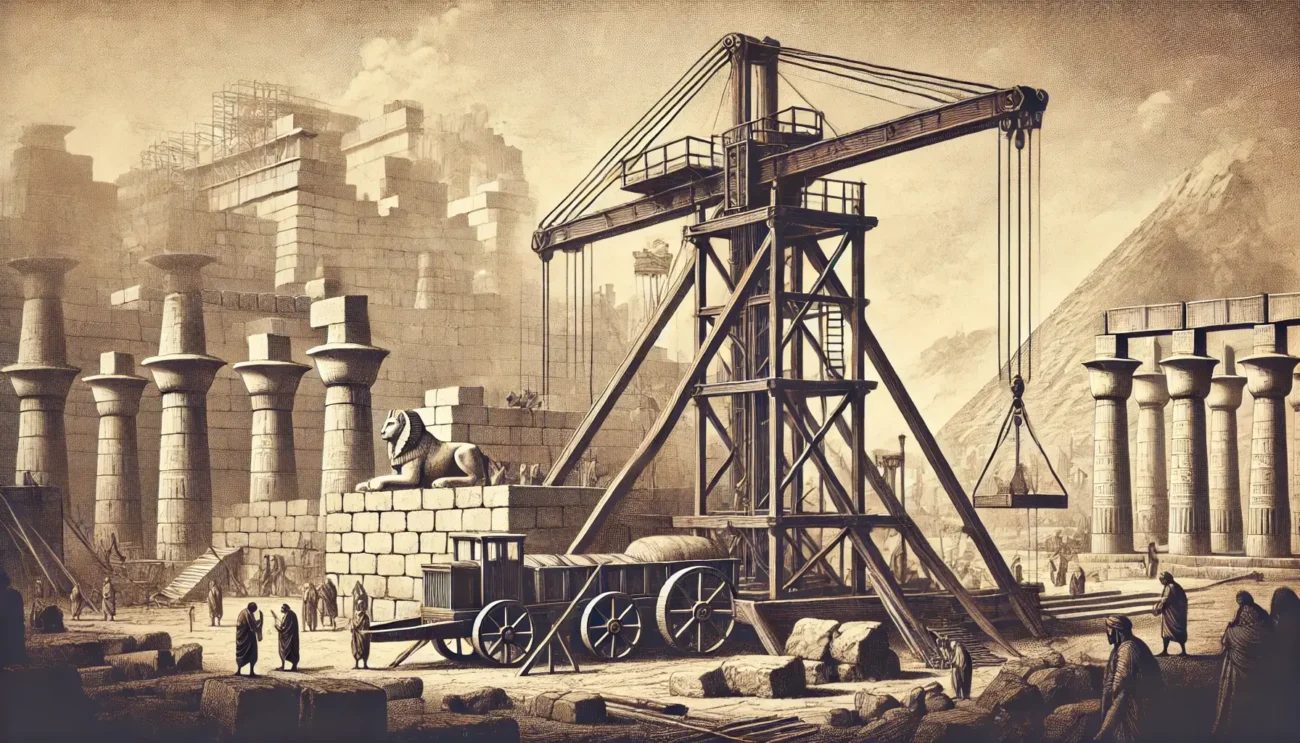
Early Cranes
جرثقیلها از هزاران سال پیش توسط تمدنهای باستانی مانند مصر، یونان و روم به کار گرفته میشدند. اولین جرثقیلهای شناخته شده از دوران باستان به عنوان ابزارهایی برای ساخت بناهای عظیم مانند معابد، اهرام و قلعهها استفاده میشدند.
مصر باستان: در زمان ساخت اهرام مصر، از سیستمهای ابتدایی شامل اهرم و غلتکها برای بلند کردن سنگهای بزرگ استفاده میشد. این ابزارها به عنوان یکی از اولین نمونههای سیستمهای بالابر مورد استفاده قرار گرفتند.
یونان باستان: یونانیها اولین کسانی بودند که از جرثقیلهای ساده با استفاده از قرقره و طناب برای جابهجایی بارهای سنگین در ساختوساز معابد و بناهای عمومی استفاده کردند. در این جرثقیلهای ابتدایی از نیروی انسانی برای حرکت دادن طنابها و قرقرهها استفاده میشد.
روم باستان: رومیها توانستند با توسعه جرثقیلهای پیچیدهتر، ساخت و ساز بناهای عظیم مانند کولوسئوم را تسهیل کنند. آنها از سیستمهای چند قرقرهای استفاده میکردند که توانایی جابهجایی بارهای بسیار سنگینتر را فراهم میکرد. جرثقیلهای رومی با استفاده از ترکیب چندین قرقره و چرخ دنده به انسانها اجازه میداد تا وزن بیشتری را با تلاش کمتر جابهجا کنند.
اجزای اصلی جرثقیلهای اولیه
جرثقیلهای اولیه از اجزای ساده و کاربردی ساخته میشدند که اصول مهندسی مکانیک پایه در آنها به کار گرفته شده بود:
قرقره: قرقره یکی از اجزای اصلی جرثقیلهای اولیه بود که به کمک آن، نیروی جابهجایی بارهای سنگین کاهش مییافت. با استفاده از قرقرهها، نیروی انسانی میتوانست با کشیدن طناب، اجسام سنگین را بلند کند.
اهرم: استفاده از اهرمها در جرثقیلهای اولیه، کارایی و توان جابهجایی را افزایش میداد. اهرمها به انسانها امکان میدادند تا بارهای سنگین را با استفاده از نیروی کمتر جابهجا کنند.
وزنههای تعادلی: در برخی از جرثقیلهای پیچیدهتر، از وزنههای تعادلی برای ایجاد توازن در هنگام بلند کردن بارهای سنگین استفاده میشد. این تکنیک در ساختارهای بزرگ روم باستان بسیار مؤثر بود.
چرخ دنده: یکی از مهمترین نوآوریهای جرثقیلهای رومی استفاده از چرخ دندهها بود که به آنها اجازه میداد نیروی بیشتری برای جابهجایی بارهای سنگین به کار بگیرند.
نحوه کارکرد جرثقیلهای اولیه
جرثقیلهای اولیه با استفاده از نیروی انسانی و برخی حیوانات کار میکردند. افراد با کشیدن طنابها و چرخاندن چرخها، بارهای سنگین را به سمت بالا یا پایین حرکت میدادند. در برخی از نسخههای پیشرفتهتر جرثقیلها، از نیروی حیواناتی مانند گاومیشها برای چرخاندن چرخها و انتقال بار استفاده میشد. این ابزارها به طور گسترده در ساختوسازهای عظیم مانند معابد، قلعهها و بناهای عمومی استفاده میشدند.
جرثقیلهای اولیه و تاثیر آنها بر ساختوساز
جرثقیلهای اولیه نه تنها در ساخت و ساز بناهای عظیم به کار گرفته میشدند، بلکه در توسعه فناوریهای بعدی نیز تأثیرگذار بودند. با استفاده از سیستمهای سادهای که نیروی انسانی را بهینه میکردند، این ابزارها به تمدنها اجازه دادند تا سازههای بزرگتر و پیچیدهتری را بسازند.
معابد و سازههای بزرگ: در یونان و روم باستان، جرثقیلها نقش مهمی در ساخت معابد عظیم و بناهای عمومی داشتند. بدون استفاده از این ابزارها، ساخت این بناها ممکن نبود.
بندرها و حملونقل: در روم باستان، از جرثقیلها برای جابهجایی بارها در بندرها نیز استفاده میشد. جرثقیلهای بندری به تسهیل عملیات بارگیری و تخلیه کشتیها کمک میکردند و تجارت دریایی را بهبود میبخشیدند.
انتقال از جرثقیلهای اولیه به جرثقیلهای مدرن
با گذشت زمان و پیشرفت تکنولوژی، جرثقیلها نیز بهبود یافتند. در انقلاب صنعتی، جرثقیلهای بخار جایگزین جرثقیلهای دستی شدند و توانستند بارهای بسیار سنگینتری را با سرعت و کارایی بیشتر جابهجا کنند. این تغییرات باعث شد تا جرثقیلها در صنایع مدرن از جمله ساختوساز، حملونقل و تولید به یکی از ابزارهای کلیدی تبدیل شوند.
نتیجهگیری
جرثقیلهای اولیه با فناوریهای سادهای مانند قرقره و اهرم، اولین گامها را در توسعه سیستمهای حمل و نقل بارهای سنگین برداشتند. این ابزارها، که از دوران باستان تا دوران مدرن به کار گرفته شدهاند، پایهگذار تحولاتی بزرگ در صنعت ساختوساز و فناوریهای مکانیکی بودند. امروزه، جرثقیلهای مدرن با استفاده از تکنولوژیهای پیشرفته مانند موتورهای الکتریکی و هیدرولیک، به شکلی کارآمدتر و با قابلیتهای بیشتر، به جابهجایی بارهای سنگین در سراسر جهان کمک میکنند.
Early Cranes: The Starting Point of an Industrial Revolution
Early cranes played a crucial role in the development of technology and industries since ancient times. From ancient civilizations to the industrial revolution, cranes have been essential tools for construction and the transportation of heavy loads. These primitive devices, built with simple technologies, paved the way for the development of modern cranes. In this article, we will explore the history and operation of early cranes and examine their impact on the evolution of various industries.
History of Early Cranes
Cranes have been used for thousands of years by ancient civilizations such as Egypt, Greece, and Rome. The earliest known cranes were used as tools for building massive structures like temples, pyramids, and fortresses.
- Ancient Egypt: During the construction of the pyramids, simple systems including levers and rollers were used to lift large stone blocks. These devices were among the first examples of lifting systems.
- Ancient Greece: The Greeks were among the first to use simple cranes with pulleys and ropes to move heavy loads during the construction of temples and public buildings. Human labor was used to pull the ropes and turn the pulleys in these primitive cranes.
- Ancient Rome: The Romans developed more complex cranes, allowing them to construct massive structures such as the Colosseum. They utilized multi-pulley systems, which enabled them to lift significantly heavier loads. Roman cranes combined multiple pulleys and gears to allow humans to move heavier weights with less effort.
Key Components of Early Cranes
Early cranes were constructed from simple, functional components based on basic mechanical engineering principles:
- Pulley: Pulleys were a key element in early cranes, reducing the force required to lift heavy loads. By using pulleys, human labor could lift heavy objects by pulling ropes.
- Lever: Levers were used in these cranes to increase efficiency and lifting capacity. Levers allowed humans to move heavy loads with less effort.
- Counterweights: Some more advanced cranes employed counterweights to balance the load while lifting heavy objects. This technique was especially effective in the large structures of ancient Rome.
- Gear systems: One of the most important innovations in Roman cranes was the use of gear systems, which allowed for greater force to be applied when lifting heavy loads.
How Early Cranes Worked
Early cranes operated using human power, and in some cases, animals. People pulled ropes or turned wheels to move heavy loads upward or downward. In more advanced versions of cranes, animals such as oxen were used to turn the wheels and transfer loads. These tools were widely employed in large-scale construction projects, such as temples, fortresses, and public buildings.
Early Cranes and Their Impact on Construction
Early cranes not only played a crucial role in constructing massive structures but also influenced the development of later technologies. By utilizing simple systems that optimized human labor, these tools allowed civilizations to build larger and more complex structures.
- Temples and large structures: In ancient Greece and Rome, cranes were essential in constructing large temples and public buildings. Without these tools, building such monumental structures would have been impossible.
- Harbors and transportation: In ancient Rome, cranes were also used for moving goods at harbors. Harbor cranes facilitated loading and unloading operations, improving maritime trade efficiency.
Transition from Early to Modern Cranes
As technology advanced, so did cranes. During the industrial revolution, steam-powered cranes replaced manual cranes, enabling the lifting of much heavier loads with greater speed and efficiency. These changes made cranes a key tool in modern industries such as construction, transportation, and manufacturing.

Early Cranes
Conclusion
Early cranes, with simple technologies like pulleys and levers, were the first steps in developing systems for moving heavy loads. These tools, used from ancient times to the modern era, laid the foundation for significant advancements in construction and mechanical technology. Today, modern cranes, using advanced technologies like electric motors and hydraulics, continue to efficiently move heavy loads across the world.



 جرثقیل ها
جرثقیل ها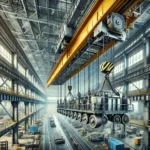 جرثقیل سقفی
جرثقیل سقفی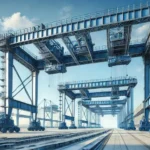 جرثقیلهای دروازهای
جرثقیلهای دروازهای بالابر
بالابر متعلقات جرثقیل
متعلقات جرثقیل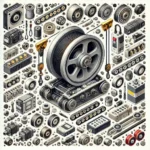 قطعات یدکی جرثقیل
قطعات یدکی جرثقیل ریموت کنترل SAGA
ریموت کنترل SAGA ریموت کنترل TELECRANE
ریموت کنترل TELECRANE ریموت کنترل HBC
ریموت کنترل HBC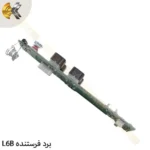 قطعات یدکی ریموت کنترل
قطعات یدکی ریموت کنترل
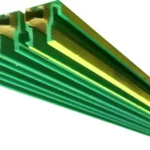 خطوط برقرسانی
خطوط برقرسانی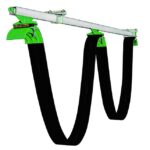 سی ریل و قرقره
سی ریل و قرقره کابل جمعکن جرثقیل
کابل جمعکن جرثقیل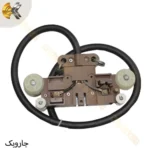 جاروبک
جاروبک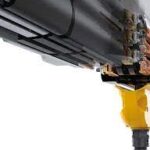 قطعات سیستم برق رسانی
قطعات سیستم برق رسانی